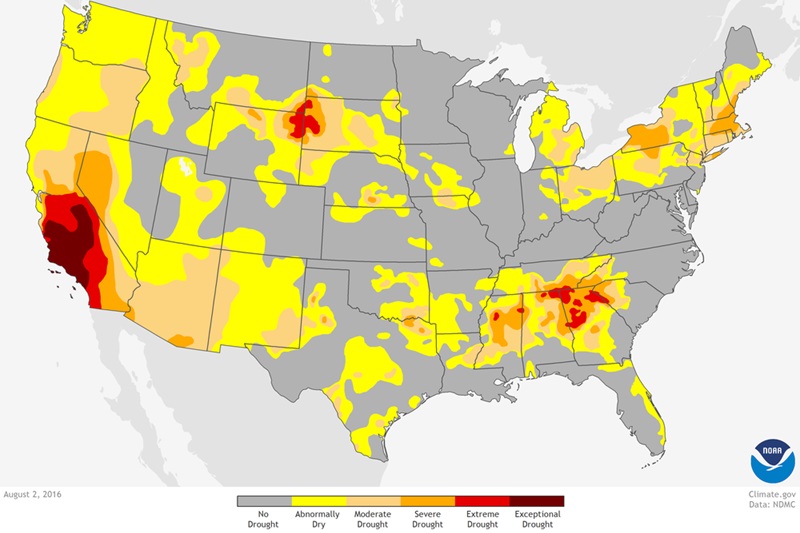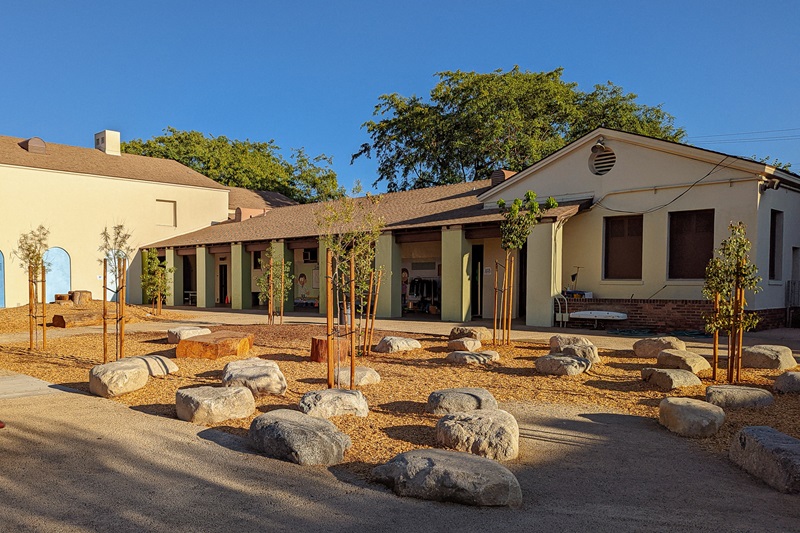Fellows in Focus: Studying Solutions to California's Water Crisis

The Lincoln Institute provides a variety of early- and mid-career fellowship opportunities for researchers. In this series, we follow up with our fellows to learn more about their work.
When Sonali Abraham began studying urban water use and efficiency at the University of California, Los Angeles in 2016, the region was emerging from a years-long drought—making it a great case study in water conservation attitudes and actions. A few years later, she completed her PhD with the help of a Babbitt Center Dissertation Fellowship, which assists doctoral students whose research advances water sustainability and resilience; she’s now a senior researcher at the Pacific Institute, an Oakland, California-based nonprofit focused on global water challenges and solutions.
In this interview, which has been edited for length and clarity, Abraham reflects on people’s misconceptions about sustainable landscapes, why water too often gets taken for granted, even in arid climates, and how schools can play a key role in urban stormwater capture.
JON GOREY: What is the focus of your research, and how did your Babbitt Dissertation Fellowship help you build upon that work?
SONALI ABRAHAM: I got the Babbitt Dissertation Fellowship in early 2020. I had finished all the in-person research for my dissertation, and it just came at such a fortunate time, going into a year where everything was so uncertain because of COVID. My dissertation was mainly focused on water efficiency, especially outdoors.
The big drought had just come to an end, so there was still an awareness in LA and the southwestern US that we all need to conserve water. But when it came to outdoor water use, there was this disconnect. You still had people with pretty significant lawn areas or fountains in their yard. LA is a cool case study, because you have both extremes: You have the people who are really good about conserving water and super aware, but you also have people who have the means to not care.

I went into it first looking at how people are using water outdoors: Are we seeing a big difference in seasonality, or when there's a drought year? How are different demographics and different communities using water outdoors? And then I focused in on the commercial sector, because I realized there was a big gap in our understanding of how commercial properties used water.
One of the big things is that they're not metered separately. You’ll have one big building with different offices in it, and everything's on one water meter, so you don't know how much a single office uses. And then it's also regulated differently. They put in conservation restrictions around the drought, but almost everything was focused on the residential sector. . . . So it was trying to understand, did commercial spaces reduce water use during the drought? Where are they using their water, what kind of landscapes are they using?
And as the final solution to all of this, what are the sustainable landscapes that we can put in place that will save water but also look good? We want to try to change this misconception that sustainable landscapes are ugly; they're not just a pile of rocks or random cacti, they're beautiful in their own right. You can have a sustainable landscape that saves water and resources but still have a really beautiful front yard that you can be proud of.
JG: What are you working on now or looking to take on next?
SA: One of the cool projects that I'm working on right now is looking at stormwater capture opportunities around schools in LA. The Los Angeles Unified School District is one of the biggest landowners in LA, and there are a lot of paved areas, so there was a lot of concern in the last year about the urban heat island effect on schools because of all the concrete around them and the intense high temperatures. You can take out that impermeable surface and create really healthy environments, both helping the children who are attending the school every day, but also the environment in the community around it, in so many different ways.
In Los Angeles County there's this program called Measure W that taxes paved or impermeable surfaces per square foot, so there's a big incentive for people to change it out. And that school project is a really cool example of that. The school district worked with a local nonprofit, Amigos de los Rios, and did a really good job [replacing almost half an acre of pavement from the schoolyard]. It's a beautiful project. They did great stakeholder engagement, it's a great example of how things can be done collaboratively and in a smart way.

JG: You’ve lived in many places around the world, from the Middle East to South Asia to both American coasts—some with an abundance of water, others facing a worrying scarcity of it. Have you seen interesting contrasts or similarities in the way people think about water in different regions or cultures?
SA: The similarity is that people undervalue water in general, I think that's a through line. Both when you have a lot and when you have a little, people just have this impression of water being limitless. When you see bodies of water, I think there's an impression of it being neverending.
It's been interesting to see the shift in what policy is focused around based on where you are. When I was in India doing my undergraduate degree, it wasn't so much about supply or scarcity—sometimes it would be in excess—but where I was specifically, it was about water quality. And so the things that you focus on, the way that water is talked about in common culture and society, is very different from how it's talked about here, or in the Middle East, where I grew up, where it’s all about scarcity.
JG: What do you wish more people knew about water conservation?
SA: It's the every-little-action-matters piece. It's boring, but I think it's important. We’re doing a study right now at Pacific Institute looking at a national assessment of water efficiency potential—so, how much water can we save across the country if we did X, Y, and Z. These are really basic technology-based changes, like efficient faucets—not behavioral changes—and you'd be surprised at how much of an impact those can make. People easily dismiss those kinds of small changes and feel like, ‘It's just me, it's just one bathroom,’ but those things add up pretty quickly.
JG: When it comes to your work, what keeps you up at night? And what gives you hope?
SA: The equity piece, especially in an international context. The issues facing different regions of the world vary a lot, and water doesn't follow country borders. But the way that people approach problems is often on a very political basis, and that worries me. I see how it's used as a weapon in a lot of places, and that is scary. I am hopeful that there is a path forward as people do more research and the word gets out more that these things have to be managed as a resource for a community as a whole—and that community can be your neighborhood, it can be your city, it can be the world, because it literally crosses all those pieces.
The scale at which things are going is really heartening, the awareness is only going up, and it's going up at a much more rapid pace than when I first started this work. When I tell people I work in water, there's often excitement and interest and people have questions and want to know more. It’s unfortunate that climate change is kind of one of the drivers that have led people to become more aware, but it's great that people are getting more aware.
I also think we're seeing a lot more policy that actually does drive change from the ground up. So in most California cities, you'll see that the gallons per person per day that people are using have actually steadily decreased. Even though the population is increasing, the water usage per person is decreasing because of changes that we've implemented through policy for buildings and new development.
JG: What’s the best book you’ve read lately?
SA: I have a great book recommendation I tell everyone to read, it's called The Covenant of Water. It's fiction, it's written by Abraham Verghese, a doctor turned author. I can't give away too much, but it's set in South India, where my family's from, so it has a personal connection for me. It's part medical mystery, part family fiction, and part cultural awareness of water and how, outside of all of the scientific, technical pieces of it, water just holds this visceral importance to a lot of communities and how they're connected to it.
Jon Gorey is a staff writer at the Lincoln Institute of Land Policy.
Lead image: Sonali Abraham. Credit: Courtesy photo.